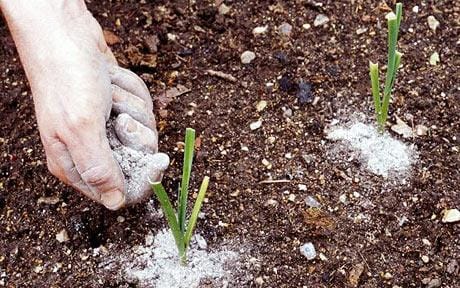Using Wood Ash In The Garden

Did you realize that the ash left subsequent to burning the wood in a stove, fire place or bonfire is called wood ash and can be utilized as a natural fertilizer in your garden?
Wood ash can be an incredible addition to the garden. It contains potassium or potash. Potassium is a fundamental supplement for crops. Potassium directs plants’ water balance (so tissue is firm and moist), and has a section in transporting nourishment inside the plant and making sugars and starches. Without enough, vegetables are more powerless against dry season, frost, pests and diseases.
Bonfires aren’t the main source of ash and the expanding ubiquity of wood-consuming stoves implies that more people need to discard significantly more ashes. Truth be told, a line of wood (the standard unit of kindling in Canada and USA, estimating 4 x 4 x 8 feet (120 x 120 x 240 cm) is probably going to create around 25 lbs (more than 11 kg) of wood ash.
Add ash to the compost heap
Wood ashes make a great addition to the compost heap, where they’ll aid fertility (most of the nutrients needed by plants are contained in them to some degree). If you have a lot, don’t add them all at once as they are alkaline and raising the pH too much will affect the bacteria and worms at work. It’s better to keep the ash in a nearby container and sprinkle on a layer every so often.
If you tend to compost a lot of acidic material, such as fruit waste, the ashes will help to keep the compost at a lower pH and reduce the need to lime the vegetable plots at a later date.
Wood ash as a substitute for lime
Speaking of liming, because ashes are alkaline, it is possible to substitute them for the usual ground limestone. However, home-produced ash isn’t a standardized product, which means its content will vary. Hardwoods, for example, generally produce more ash and contain more nutrients than softwood. According to the information from Oregon State University Extension Service, ash from a cord of oak will provide enough potassium for a garden 60 x 70 feet, whereas a cord of Douglas Fir will be sufficient for a garden 30 x 30 feet, while both will raise the soil pH slightly. Bonfire ash is even more variable, because of the mix of plant tissue.
Like the potash content, the calcium carbonate content will also vary, so it’s a good idea to test the pH of your soil before adding the ash and three to six months after, to check on its effect. It wouldn’t hurt to check up on the potassium content while you’re at it. There’s no point in adding potash to a soil that’s already high in potassium, as too much can affect the plants’ take-up of other nutrients.
Where NOT to use wood ash in the garden
Being alkaline, wood ash obviously isn’t an ideal addition if your soil already has a pH of 7.5 or greater. There’s no point in spreading it around acid-loving plants such as blueberries. Nor is it recommended for areas where you intend to grow potatoes (much though they enjoy potassium) as increased alkalinity can encourage the fungus, potato scab.
It’s also worth remembering that potash is extremely soluble, so keep it absolutely dry before you use it (this includes before adding it to the compost heap). Leave your ashes out in the rain and all the potash will wash out and you’ll be left with a sticky and fairly useless sludge. If you pile a large amount of ash in one area, you also risk over-liming that area and damaging nearby plants.
Adding ash direct to the soil
Sprinkling ash straight onto the soil also deters slugs and snails (the moment it gets wet, this effect unfortunately vanishes). You can also try sprinkling ash in the drills when you sow carrots, and dusting it on turnips to keep carrot and turnip fly away.
Add ash to the soil in spring and autumn, but it can be spread it around at other times whenever it’s available and you might as well if you know you can’t keep it bone-dry. Root vegetables such as carrots, parsnips, peas and beans (pods are a better weight and colour) and fruit all appreciate potash.
Regarding fruit, if you have only a little potash, it should go to dessert apples, redcurrants and gooseberries first, then to cooking apples, pears, raspberries, blackberries and strawberries. Plums, apricots, cherries and blackcurrants appreciate a regular sprinkle, but don’t need it so much.


